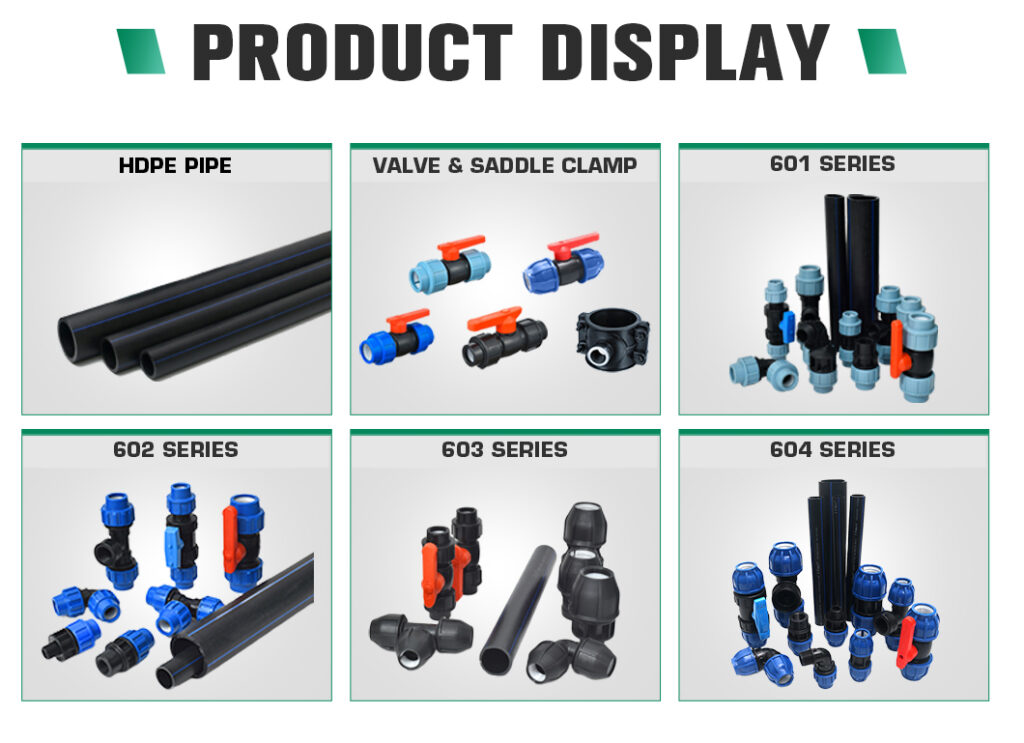Applications and advantages of hdpe pipe fittings,with the continuous development of industrialization and the acceleration of urbanization, the demand for pipelines in water conservancy, urban construction, petrochemical and other fields is also increasing. In the pipeline system, the pipe connectors are an indispensable part. In the market, HDPE Fittings, as a high-performance pipe connector, are increasingly widely used in the field of pipeline construction. So, what are the advantages of using HDPE Fittings in the pipeline industry?IFAN factory has 30+ years of manufacturing experience supporting color/size customization support free samples.Welcome to consult for catalog and free samples. This is our Facebook Website: www.facebook.com
Introduction to HDPE Fittings
HDPE Fittings, also known as high-density polyethylene pipe fittings, are pipe connectors that are usually used to connect or turn HDPE pipes in different directions. HDPE Fittings are connected by hot melt connection, electrofusion connection and mechanical connection method. Each method has its unique characteristics and scope of application.
Advantages of HDPE Fittings in the pipe industry
Good corrosion resistance
HDPE Fittings are made of high-density polyethylene and have good corrosion resistance. This kind of pipeline connector can be used for a long time in a variety of acid, alkali, salt and corrosive gas environments, reducing pipeline failure rates and operation and maintenance costs. At the same time, HDPE Fittings themselves will not corrode, will not react chemically with other materials, and can maintain the stability of the pipeline.

Easy to install
Compared with other types of pipe fittings, HDPE Fittings are very easy to install. They can be quickly heated, melted or electrofused, and HDPE pipes stretch so much that they won’t shift or crack during installation. This also greatly shortens the pipeline construction cycle, reduces human, material and financial costs, and helps improve pipeline construction efficiency.
Excellent pressure resistance
HDPE Fittings have good pressure resistance and impact resistance. The overall performance of HDPE pipes and connectors is very stable, able to withstand large external forces and loads, and has a long service life. Compared with traditional metal pipes, HDPE Fittings have higher pressure resistance, are lightweight, easy to handle and transport, which greatly reduces the cost of pipeline construction.
Environmental protection and safety
HDPE Fittings do not contain any harmful substances and are an environmentally friendly material. During transportation and use, no harmful substances will be released into the surrounding environment, ensuring environmental safety. In addition, HDPE Fittings are not as conductive as metal pipes and connections, which can avoid fire safety hazards caused by gas leaks.
Reusability
HDPE Fittings are technically highly reusable, especially in the fields of environmental protection and energy saving. It can be melted down and used again, and has a long service life, which meets the requirements of environmental protection concepts and sustainable development. This means that HDPE Fittings not only has price competitiveness in pipeline construction projects, but also has great potential in environmental protection.
Conclusion
Generally speaking, HDPE Fittings are excellent pipe connectors and have obvious advantages in replacing traditional metal pipe connectors in the field of pipeline construction. It has the advantages of excellent corrosion resistance, easy installation, excellent pressure resistance and impact resistance, as well as environmental protection, safety, and reusability. With the increasing awareness of environmental protection, more HDPE Fittings will be used in leather, medicine, chemical industry, machinery, papermaking and other fields to provide reliable and safe pipeline systems for these industries, while also saving energy for society and protecting the environment. Made a good contribution.

